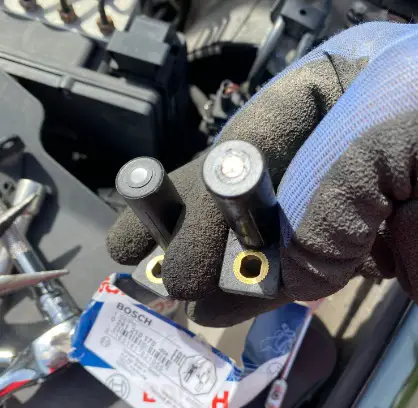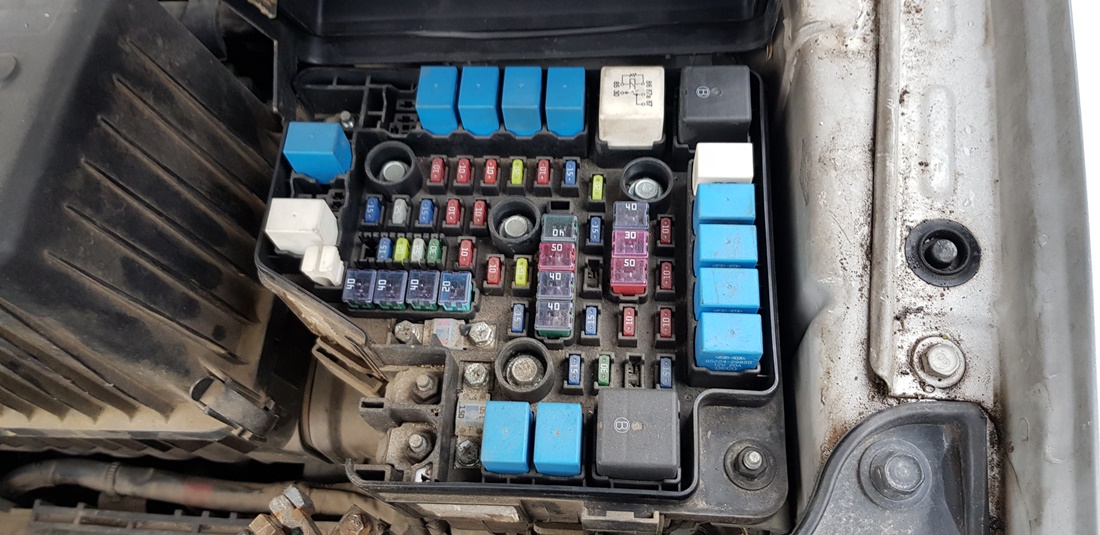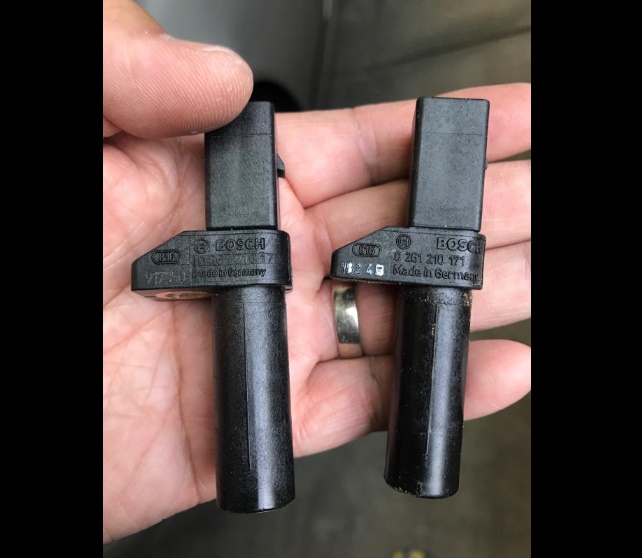If you are experiencing a loss of power and you suspect that your catalytic converter is going bad, you may want to consider is it safe to drive with a bad catalytic converter.
Key Takeaway
- While it’s technically possible to drive with a bad catalytic converter, it’s not recommended due to potential poor engine performance, higher emissions, and the risk of complete engine failure.
- A car with a bad catalytic converter can still operate, but it may experience reduced fuel efficiency, rough idling, difficulty starting, power loss during acceleration, and increased emissions due to the converter’s inability to properly process exhaust gases.
- An extremely malfunctioning catalytic converter can cause a car to shut off and refuse to start due to the restriction of exhaust gas flow caused by clogging.
What Is a Catalytic Converter

A catalytic converter is a device installed in the exhaust system of a vehicle to reduce harmful emissions.
It contains a catalyst, typically made of platinum, palladium, and rhodium, which facilitates chemical reactions that convert harmful exhaust gases into less harmful substances.
The catalytic converter plays a crucial role in reducing pollutants such as carbon monoxide (CO), nitrogen oxides (NOx), and hydrocarbons (HC) from the vehicle’s exhaust, helping to minimize air pollution and comply with emission regulations.
Is It Safe To Drive With a Bad Catalytic Converter

No, it is not safe to drive with a bad catalytic converter because it can cause serious engine damage, reduce fuel efficiency, and increase emissions.
When your engine is running, the temperature in the cylinder is roughly about 2,500 degrees Fahrenheit.
When the exhaust valves open up, the exhaust goes down through the manifold and into the catalytic converter.
If the catalytic converter ever becomes clogged for any reason, all that pressure buildup and heat from the combustion chamber will stay inside the engine and it will cause the engine to overheat.
It is also important to note that driving with a bad catalyst converter may be illegal in some areas due to its effect on air quality.
Therefore, if you suspect your car has a bad catalytic converter, it should be replaced as soon as possible for the safety of both your vehicle and the environment.
How Does a Car Run With a Bad Catalytic Converter?

A car with a bad catalytic converter can still run, but it may not run well and you may notice reduced fuel efficiency, rough idling, difficulty starting the car, and power loss during acceleration.
In severe cases, a failing catalytic converter can cause the engine to stall or go into ‘limp mode’, where the vehicle runs at reduced power to prevent further damage.
It’s also worth noting that a malfunctioning catalytic converter can trigger the check engine light on your dashboard.
How Long Can You Drive With a Bad Catalytic Converter

You can usually drive indefinitely with a bad catalytic converter, although it may result in decreased performance and a potential check engine light.
The duration you can drive with a bad catalytic converter can vary depending on the extent of the issue and the specific vehicle.
While driving with a partially plugged or clogged catalytic converter is possible, it is important to address the issue promptly to avoid failing emissions tests and potential damage to other components of the vehicle’s exhaust system.
Signs Of a Bad Catalytic Converter

- Rattling noise coming from under your vehicle and engine when starting or idling
- Poor acceleration and reduced engine performance
- Sluggish engine performance and reduced acceleration
- Dark exhaust smoke and the smell of sulfur or rotten eggs from the exhaust
- Loss in power and acceleration, jerky movements, and complete stall outs if exhaust flow is severely restricted
- An illuminated check engine light, caused by backpressure from a clogged or faulty converter
- Smog coming from your car
Rattling Noise Coming From Under Your Vehicle and Engine When Starting or Idling
This could be a sign that the catalytic converter is failing. The noise typically comes from the metal catalyst inside the converter, which can disintegrate over time and cause a rattling sound. This is often most noticeable during startup or while idling.
Poor Acceleration and Reduced Engine Performance
A bad catalytic converter can significantly reduce your car’s acceleration and overall engine performance. This happens because a malfunctioning converter can’t effectively convert the harmful gases from the engine into less harmful substances, leading to backpressure that affects the engine’s functioning.
Sluggish Engine Performance and Reduced Acceleration
Similar to the previous point, a failing catalytic converter can cause the engine to feel sluggish and not accelerate as it should. This is due to the restricted exhaust flow caused by a clogged or damaged converter.
Dark Exhaust Smoke and the Smell of Sulfur or Rotten Eggs From the Exhaust
When a catalytic converter isn’t working properly, it may not be able to effectively convert hydrogen sulfide into sulfur dioxide. This can result in a strong smell of sulfur or rotten eggs coming from your exhaust. Additionally, you might notice darker-than-usual exhaust smoke.
Loss in Power and Acceleration, Jerky Movements, and Complete Stall Outs if Exhaust Flow is Severely Restricted
If your catalytic converter is severely clogged or damaged, it could restrict the exhaust flow to the point where your car experiences significant power loss, jerky movements, or even stalls completely.
An Illuminated Check Engine Light, Caused by Backpressure From a Clogged or Faulty Converter
One of the most common signs of a bad catalytic converter is an illuminated check engine light. This is often due to increased backpressure in the exhaust system caused by a clogged or faulty converter.
Smog Coming From Your Car
If you notice smog or excessive emissions coming from your car, this could indicate a problem with your catalytic converter.
A properly functioning converter should effectively reduce the amount of harmful substances in your car’s exhaust, so any increase in emissions could suggest that the converter isn’t doing its job.
What Causes a Catalytic Converter To Go Bad
- Engine misfires or runs rich, which can lead to excessive fuel entering the catalytic converter.
- Overheating due to a coolant leak, malfunctioning oxygen sensor, or exhaust system issues.
- Contamination from engine oil or coolant leaks, which can damage the catalyst inside the converter.
- Physical damage, such as impact from road debris or improper installation.
- Age and wear over time, as the catalytic converter may deteriorate and become less efficient.
- The use of leaded gasoline or contaminated fuel can also contribute to catalytic converter failure.
How To Clean The Catalytic Converter Without Removing It

Replacing a clogged catalytic converter can cost up to $1000. A check engine light might come up even if you only lose 5% efficiency of your catalytic converter.
So, before you spend money on a new catalytic converter, why don’t you try and clean your catalytic converter without removing it.
1. Run a diagnostic check
To make sure that your catalytic converter is bad, you will have to run a diagnostic with a diagnostic tool ( ). If you are getting error codes P0420 to P0439 or oxygen sensor codes, then your catalytic converter is clogged.
). If you are getting error codes P0420 to P0439 or oxygen sensor codes, then your catalytic converter is clogged.
2. Make sure that your fuel tank is half full
Before you start, you need to make sure that your fuel tank is at least half full before you pour the catalytic cleaner solution. Your vehicle would need to run for at least 30 minutes and you will need fuel.
3. Add the catalytic converter cleaner
There are a lot of catalytic converter cleaning products available. I usually use the Cataclean ( ). It is working just fine. If you have another cleaning product, go ahead and pour that one in the gas tank.
). It is working just fine. If you have another cleaning product, go ahead and pour that one in the gas tank.
4. Run your vehicle for 30 minutes
Once you pour the catalytic converter cleaner into the fuel tank, you can either rev your engine on 2500 RPMS for 30 minutes or you can drive on the highway for over 150 miles at higher speeds. This will make sure that the cleaning solution from the fuel tank will pass through the catalytic converter and unclog it.
5. Run diagnostics again
If your catalytic converter was just clogged and not cracked or broken, you should no longer receive error codes and the check engine light on your dashboard should turn off itself.
Can a Bad Catalytic Converter Ruin Your Engine?

A bad catalytic converter cannot directly damage an engine, but it can indirectly cause damage such as decreased fuel thermal efficiency, poor emissions, reduced engine performance, and even engine shutdown.
While you can still drive your car with a bad catalytic converter, it may lead to incomplete combustion within the firing cylinders, causing an engine misfire.
If left unchecked, a failing catalytic converter will eventually degrade and collapse, plugging the exhaust, which will choke vehicle performance and limit the lifespan of the engine.
Can a Bad Catalytic Converter Cause a Car To Shut Off?
Yes, a severely malfunctioning catalytic converter can cause a car to shut off and refuse to start. This typically occurs when the converter is extremely clogged, which restricts the flow of exhaust gases.
In such cases, the retained exhaust gases can cause the engine to stall due to increased pressure.
However, it’s important to note that a bad catalytic converter won’t necessarily cause your car to shut off, as it’s not part of the ignition system.
A partly clogged converter may have minimal impact on your vehicle’s performance, but it can lead to other issues, such as reduced acceleration and difficulties operating at slower speeds.
FAQs
Q: What is a catalytic converter?
A: A catalytic converter is a device installed in a vehicle’s exhaust system that helps reduce harmful emissions and convert them into less harmful gases.
Q: What is a bad catalytic converter?
A: A bad catalytic converter refers to a catalytic converter that is no longer functioning properly or has become damaged. It may not be able to efficiently convert harmful emissions, resulting in increased pollution and potential engine problems.
Q: What are the signs of a bad catalytic converter?
A: Some common signs of a bad catalytic converter include the check engine light illuminating, reduced engine performance, decreased fuel efficiency, the sulfur-like smell from the exhaust, and rattling or noisy exhaust system.
Q: Can a bad catalytic converter cause my vehicle to fail an emissions test?
A: Yes, a malfunctioning or damaged catalytic converter can cause a vehicle to fail an emissions test, as it may not be able to effectively reduce emissions to meet the required standards.
Q: Is it safe to drive with a bad catalytic converter?
A: It is generally not recommended to drive with a bad catalytic converter. Not only can it contribute to increased pollution, but it can also lead to reduced engine performance and potential damage to other components.
Q: Can a bad catalytic converter damage my engine?
A: Yes, a bad catalytic converter can potentially cause damage to your engine. The improper conversion of harmful emissions can lead to increased heat and strain on the engine, which may result in engine problems over time.
Q: How long can I drive with a bad catalytic converter?
A: There is no specific timeline for how long you can drive with a bad catalytic converter as it may vary depending on the severity of the issue. However, it is best to have it inspected and repaired as soon as possible to prevent further damage and potential engine issues.
Q: What causes a catalytic converter to go bad?
A: Several factors can contribute to a catalytic converter going bad, including engine misfires, excessive oil or fuel consumption, the use of leaded gasoline, overheating, and physical damage from road debris or accidents.
Q: Can I replace a bad catalytic converter myself?
A: While it is technically possible to replace a catalytic converter yourself, it is recommended to have it done by a professional. Catalytic converter replacement involves specialized tools and knowledge, and improper installation can lead to further complications.
Q: How much does it cost to replace a bad catalytic converter?
A: The cost of replacing a catalytic converter can vary depending on the make and model of your vehicle, as well as your location. On average, the cost can range from $500 to $2,500, including parts and labor.
In Conclusion
While it’s technically possible to drive a vehicle with a bad catalytic converter, doing so can lead to a range of issues.
A malfunctioning converter can affect the performance of your car, causing reduced acceleration, poor engine performance, and in extreme cases, complete engine failure.
Not only does this make for a less pleasant driving experience, but it also increases your vehicle’s emissions, contributing to environmental pollution.




